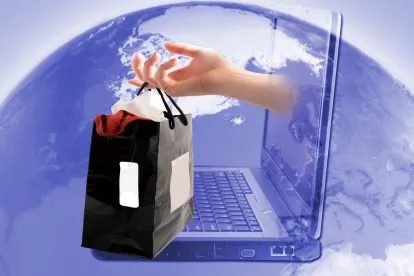Since March 2020, the COVID-19 pandemic has impacted virtually all aspects of our daily lives. Zoom meetings have replaced conference room gatherings. Kids attend classes from kitchen tables. Family movie nights are likely to involve a first-run film streamed to a television, not a trip to the local cinema.
The retail sector certainly has felt the upheaval of the pandemic. But despite what some may think, not all of the news is bad. Retailers have found new ways to connect with, and serve, customers, particularly through e-commerce. Retail sales numbers for Q3 and Q4 2020 prove that customers are willing to spend both on line and in stores — but their expectations for the shopping experience have changed.
In order to keep pace with this new reality of retail shopping (which isn’t going to revert back to pre-pandemic norms even when COVID-19 is in check), retailers must focus on maximizing the in-store experience for customers, strengthening online retail offerings and being mindful of rising costs related to operating a brick-and-mortar store.
Retail Trends Show Massive Online Growth, Positive Signs for In-Person Sales
To be clear, e-commerce was here to stay long before COVID-19 entered our collective vocabulary. In 2019, online sales made up 16 percent of total retail sales, up from 7.6 percent in 2013i. Statistics show a relatively steady increase of e-commerce’s share of retails sales from 2013 until 2019.
The pandemic shifted this trend into overdrive. E-commerce sales volume reached $211.5 billion in Q2 2020, growing 32 percent from Q1 and 44.5 percent year-over-year.
Although down slightly from Q2, e-commerce sales for Q3 were approximately $210 billion — up 37% compared to Q3 2019.ii These numbers don’t include transactions that were “touched” by online – such as a customer researching a product online and buying it at a store.
But the growth in retail sales hasn’t come entirely at the expense of brick-and-mortar retail. In fact, in-store retail reached an all-time quarterly high of $1.259 trillion in Q3 2020, rebounding 14.5% after a shaky Q2. Customers still want the immediacy and in-person experience of physical retail shops. However, they want to engage with these shops in a different way, and that involves a blended approach that combines aspects of online and in-person retail.
In-store retail reached an all-time quarterly high of $1.259 trillion in Q3 2020, rebounding 14.5% after a shaky Q2.
Blended Approach Critical in Evolving Retail Economy
No doubt, online retail has played a huge role in keeping the U.S. economy from suffering even greater damage during the pandemic. Stay-at-home orders and consumer concerns about exposure to the virus led people to order goods online and have them shipped to their homes with increased frequency.
Online retail still doesn’t completely satisfy most consumers, though. A 2018 study reported 90% of surveyed shoppers stated high shipping fees and home delivery lasting more than two days would deter an online purchase.
Amazon (the nation’s second largest retailer behind only Walmart) cracked the code with its Prime service, offering free shipping and two-day (or faster) turnaround. Not surprisingly, Amazon saw tremendous sales growth in 2020. Other national retailers, including Walmart and Target, have poured resources into strengthening their online shipping services.
Omni-channel marketing — which combines the strengths of online and in-person retail — offers opportunities for brick-and-mortar retailers to serve customers in this new environment of increased comfort with web shopping. For example, customers shop for items online, then pick up their merchandise either in the store or, even more conveniently, curbside in their cars.
The market shift in retail poses tremendous challenges to small retailers: challenges that COVID-19 exacerbated. Engaging in e-commerce is more than simply setting up a website and waiting for orders. Omni-channel marketing is difficult for small retailers due to the costs associated with setting up such an operation. Such costs include:
-
E-commerce software. Retailers must either set up their own system for online purchases or pay a third-party vendor (such as Shopify) to help process orders.
-
Sales tax accounting. A 2018 Supreme Court decision made e-sales subject to state sales taxes. Large, national retailers have the resources to sort out tax obligations on a state-by-state basis. But small businesses likely need to employ third-party software options to track state sales taxes.
-
Search engine optimization (SEO). Businesses need to be able to get customers’ attention on internet searches for key terms, and getting this coveted placement costs money.
Black Friday/Cyber Monday Demonstrate Omni-Channel Marketing’s Growing Potential
Black Friday and Cyber Monday—typically two of the busiest sales dates of the year—illustrate how rapidly the retail market is shifting.
Black Friday foot traffic to physical stores decreased by 48 percent. However, spending per customer increased by more than 36 percent.iii Black Friday online sales were up 22 percent from 2019 to $9 billion, while Cyber Monday sales were up to $10.2 billion—a 15 percent increase year-over-year.iv These numbers reveal several things: 1. Customers still are willing to spend money, even in the current economic downturn; 2. Shoppers are more purposeful; they come to stores knowing what they want to buy; and 3. Consumers still place value on in-store purchases but increasingly need a reason to visit the store.
Another key stat worth noting is that contactless curbside pick-ups at retail stores were up a whopping 52 percent on Black Friday 2020. This increase recognizes consumers’ desire for safety during the pandemic, as well as their desire for immediate access to retail products.
The Buy Online Pickup in Store, or BOPIS, revolution blends online and in-store customer engagement, providing consumers with a more convenient way to shop. Again, it is likely customers will continue to crave that convenience even when the pandemic is over.
Legal and Business Challenges Facing Brick-and-Mortar Retailers
But BOPIS raises significant business and legal issues. Lease provisions can be a complication for retail landlords in the current environment. For example, if an anchor store leaves, other retailers in the shopping center may be able to trigger lower rent or even lease termination rights. Also, if rent is based on a percentage of retail sales, are BOPIS sales included in that total and, if so, how?
Retailers face their own set of legal and business challenges. Repurposing malls and big box stores as delivery points may be limited by applicable restrictive covenants. Also, restrictive covenants may limit rights to use common space for deliveries to consumers. These issues should be addressed up front, as it is in the best interests of both retailer and retail landlord to keep customers satisfied.
Many brick-and-mortar retailer costs are fixed and don’t depend on foot traffic or sales. These fixed costs include such items as base rent, insurance, enterprise software (needed to run the business, manage payroll, etc.), common area maintenance (CAM), and ad valorem property taxes. These costs haven’t decreased as a result of COVID-19.
The latter cost can be particularly problematic. Ad valorem property taxes typically are based on store rent, not its profitability. Unfortunately for most retailers, current property tax bills are based on a January 1 2020 valuation date—before the pandemic became a factor- and therefore are irrelevant for current property tax bills.
Municipal revenues have declined 21 percent during the pandemic, while municipal expenses increased 17 percent.v It doesn’t take an economist to realize those two trend lines are unsustainable for city budgets and likely will mean deep cuts in municipal services, significant increases in property taxes—or both. And generally, only property owners, not tenants, may challenge property tax valuations. It is vital that retail property owners and their tenants work together to resolve these challenges.
Key Considerations for Retail in the COVID-19 Era
Retail trends continue to evolve, but the country’s embrace of e-commerce seems permanent. So retailers need to prepare to meet customer demand, both now and in the post-pandemic future. Some items to consider:
-
Create value in the in-store experience. Customers aren’t ready to give up in-person retail, but stores must give them incentives to shop. Keep in mind that today’s customer values convenience.
-
Omni-channel marketing is here to stay. So look for ways to marry online and in-store offerings. The aforementioned BOPIS model, for example, combines the convenience of e-commerce with the immediacy of in-store shopping.
-
Pay attention to lease provisions. In particular, keep a close eye on BOPIS rights, rent considerations (i.e. are there thresholds for triggering automatic rent reductions/lease escapes?) and taxes.
-
Seek to reduce occupancy costs inherent in bricks and mortar retail (e.g., ad valorem taxes). The good news for retailers is that we are in a buyer’s market for commercial real estate space. Stores should work with their landlords on ways to reduce the fixed costs of doing business.
i Internet Retailer magazine
ii U.S. Census Bureau/ Commercial Café
iii RetailNext
iv Adobe Analytics
v National League of Cities




 />i
/>i

